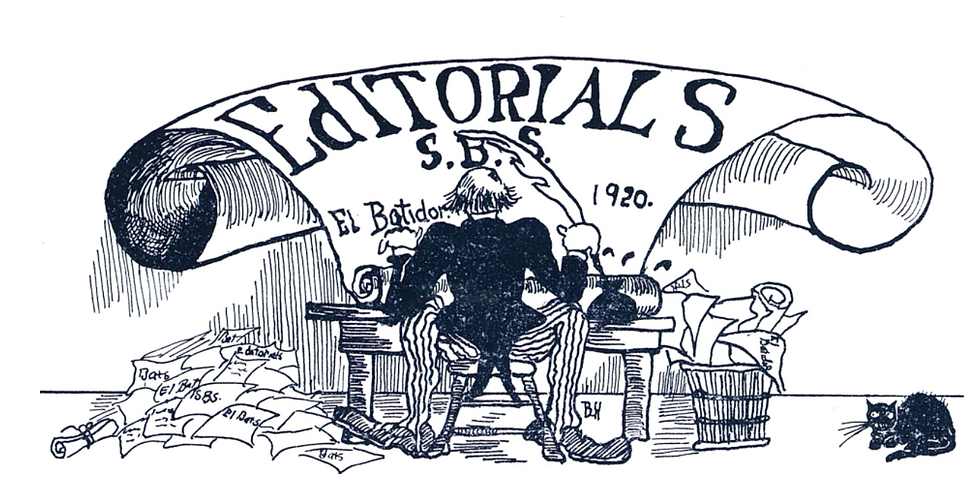Opinion: From Cate to ACDA – Why Choir Is More Than Performance
- miagroeninger5
- May 23
- 3 min read
By: Claire Ziebart '26
If you’ve ever heard someone say, “I’m doing SCVA VJCA and then ACDA SATB,” and thought they were speaking in code, you’re not alone. The world of high school choral music is packed with enough acronyms to resemble government bureaucracy. But behind the scrambled letters lies a deeply emotional, once-in-a-lifetime experience, one I was fortunate to take part in this year at the American Choral Directors Association (ACDA) All-Nationals Conference in March 2025.
My participation in ACDA Nationals, as well as the Southern California Vocal Association (SCVA) Regionals and the SCVA Vocal Jazz A Cappella Honor Choir (VJCA), would not have been possible without the mentorship of Gabriel Di Gennaro, affectionately known at Cate as “Deeg.” Beyond being an exceptional musician, Deeg is an advocate for student opportunity. He not only prepares us musically but also drives us to auditions, connects us with organizations, and reminds us what it means to love our craft. Being part of the Cate vocal program under his leadership opens countless doors to real-world experiences, whether it’s performing with top-tier ensembles, learning professional rehearsal etiquette, or joining a nationwide network of passionate young musicians. Deeg ensures that what we do in the practice room carries far beyond the walls of the classroom.
ACDA All-Nationals is one of the most rigorous and rewarding experiences a high school singer can undertake. You might be asking, “What actually happens there?” In the weeks leading up to the conference, participants receive sheet music, typically five to six pieces spanning genres, languages, and time periods. Each singer is expected to arrive fully prepared. Upon arrival, there are “part checks” to ensure that the students know their part.
The rehearsals themselves are intense: six to eight hours a day spent refining blend, balance, diction, and dynamics with a notable conductor. Yet, the most powerful part of the experience is hearing the song come together. Until then, each participant has only heard the music in fragments: in bedrooms, practice rooms, through headphones, and alone. But in the rehearsal room, the sound becomes whole. The magnitude of the moment is difficult to describe. You are surrounded by hundreds of voices, each one shaped by hours of solitary preparation, now blending into a sound so rich and complete that it’s often overwhelming. Many of us cried. Not from nerves, but from the sheer emotional weight of what we had created together.
There’s a profound beauty in these ensembles. It is the first and last time that the choir ever exists. That final performance is both a first and a farewell.
What made the experience even more meaningful for me was the chance to represent Cate on a national stage. I wore my Cate sweatshirt to rehearsals, and it sparked conversation with students from across the country. A few singers from Alaska and South Dakota recognized the name immediately. "Wait, you go to Cate?" as they shared that they had either applied, visited, or known someone who had attended. In a room full of strangers, moments like that reminded me how far the Cate community reaches, and how proud I was to carry that name with me.
Programs like ACDA, SCVA, and VJCA offer more than performance opportunities. And thanks to the Cate vocal program and educators like Deeg, students at Cate can step into those spaces prepared, supported, and inspired.




Comments